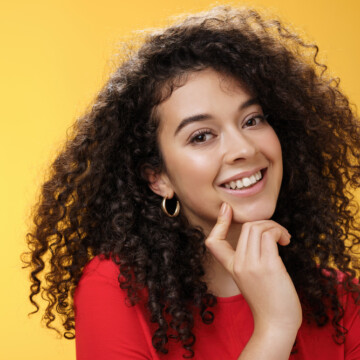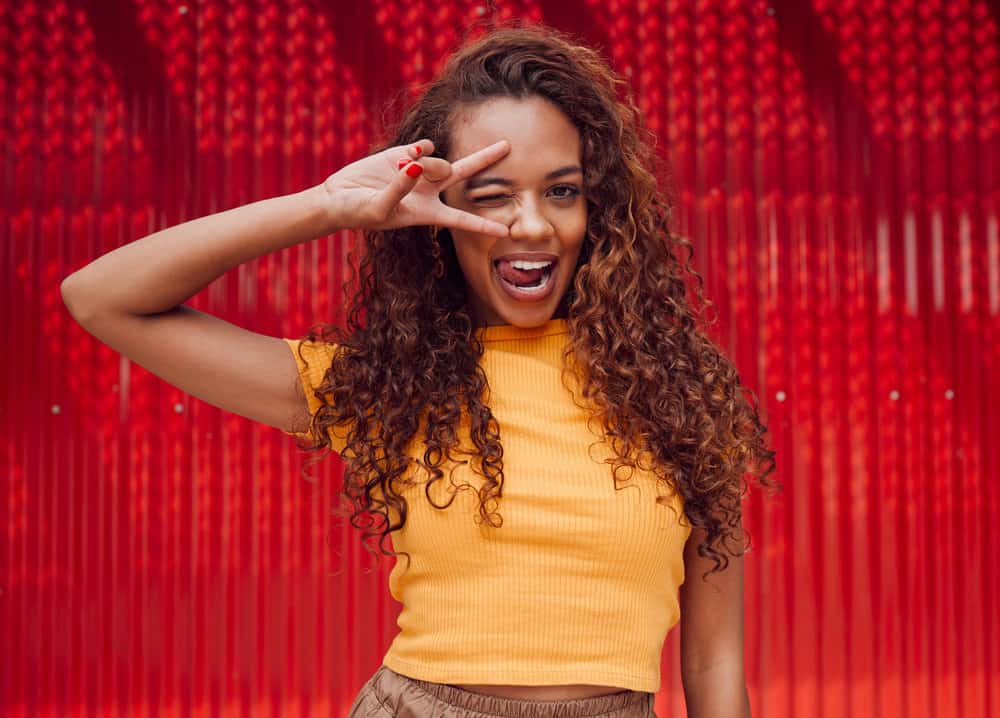
Washing curly hair is one of those things that most curly girls hate to do. That's because wash day is thought to take all day. While it can take several hours in some cases, there's no reason why it has to be difficult and fear-filled for you.
Knowing the basics of washing curly hair is the best way to ensure that wash day goes well. If you want to learn how to wash curly hair like a professional, this is the article for you. In it, we'll tell you everything you need to know about the process and cover it in easy step-by-step instructions. Let's get right into it!
Table of Contents
- 1 How to Wash Curly Hair with Shampoo
- 1.1 1. Part Your Hair into Several Sections
- 1.2 2. Hop in the Shower and Set the Water Temperature
- 1.3 3. Drench Your Hair with Water
- 1.4 4. Apply Shampoo to Your Hair
- 1.5 5. Begin Scrubbing Your Hair
- 1.6 6. Repeat the Process on the Rest of Your Hair
- 1.7 7. Wait or Don't
- 1.8 8. Rinse the Hair with Lukewarm Water
- 2 How Often Should You Wash Curly Hair With Shampoo?
- 3 How to Wash Curly Hair with Cowash or Conditioner
- 4 How Often to Cowash
- 5 What to Do After Washing Your Hair
- 6 Is it Okay to Wash Curly Hair Every Day?
- 7 What Shampoos Not to Use on Curly Hair
- 8 Best Shampoos for Curly Hair
How to Wash Curly Hair with Shampoo
Most people have no idea that curly hair requires a modified hair-washing routine to ensure its health. If you have curly hair, you should know that lathering, rinsing, and repeating is a minuscule part of the washing process.
In reality, you've got to go through the following steps for the best results:
1. Part Your Hair into Several Sections
Parting your hair into about 2 to 4 is about right. Use your fingers or a comb to do the sectioning, and then secure each of the sections with a ponytail holder or large clip.
2. Hop in the Shower and Set the Water Temperature
There are few things more relaxing and rejuvenating than a steamy shampoo session. But, in reality, it's not the best thing for your hair. If you wash your hair with water that's too hot, you run the risk of drying your hair out beyond belief, increasing your chances of brittleness and breakage.
So, set the water temperature to lukewarm. It's warm enough not to give you goosebumps but cool enough not to have any harsh effects on your hair.
3. Drench Your Hair with Water
Release one of the sections and drench it with water; we mean, drench it. Any areas that aren't saturated with water won't be adequately cleansed.
4. Apply Shampoo to Your Hair
Dispense some of your chosen shampoo into your hands and rub them together before applying it to your hair. Focus the shampoo on your roots rather than the mid-lengths or ends. Applying shampoo to your ends tends to dry them out quickly, making detangling and styling your hair more difficult.
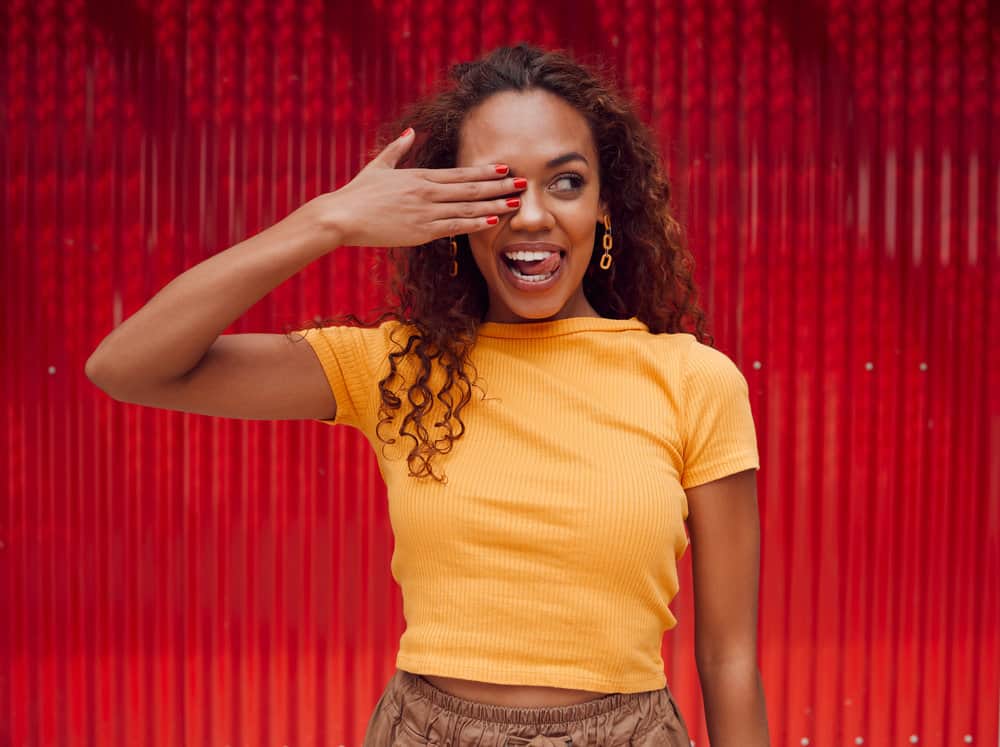
5. Begin Scrubbing Your Hair
With the shampoo currently coating the roots of your hair, begin scrubbing using circular motions with the pads of your fingers. It's wise not to use your nails, as they can lead to you making superficial cuts on your scalp. You could also damage your hair cuticles, making split ends more likely to form.
6. Repeat the Process on the Rest of Your Hair
When you're done with one section, release the next section and do the same for the next one. When all of the hair has been lathered up, move the shampoo down toward the ends of your hair.
7. Wait or Don't
Depending on your goal for shampooing your hair, you may want to leave the shampoo in your hair. If you're doing a typical wash to maintain your hair's cleanliness, there's no reason to leave the shampoo in your hair for extra time.
But if you are clarifying your hair (and have chosen a clarifying shampoo), you should definitely wait a few minutes to allow the shampoo to remove caked-on dirt, debris, and oils.
8. Rinse the Hair with Lukewarm Water
It's imperative to get all of the shampoo out of your hair before moving on to the next step. Leaving shampoo behind can spell trouble for your scalp. If you have ever left shampoo on your hair, you know how irritated your scalp can get.
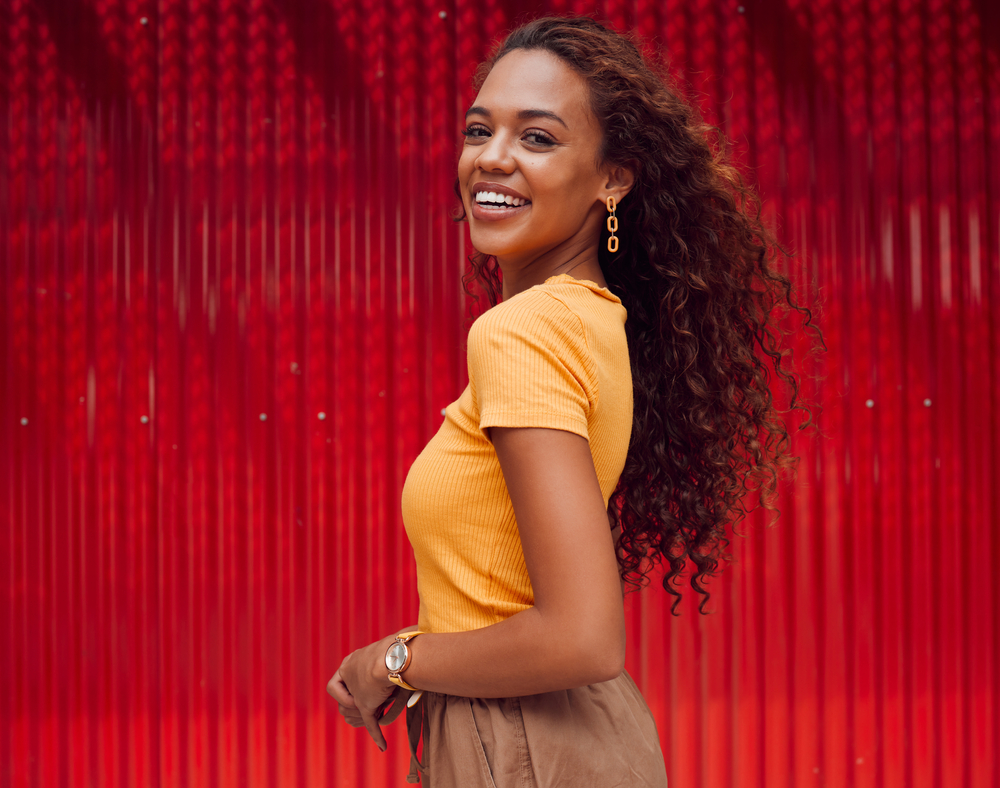
How Often Should You Wash Curly Hair With Shampoo?
The number of times you wash your hair with shampoo will depend on your hair type, how much product you use on a regular basis, how much time you can devote to wash days, and more. But, on average, people with curly hair shampoo anywhere from 1 to 3 times per week. Some even go longer than that between washes.
If you use a lot of hair products or notice that your scalp looks visibly dusty and dirty every few days, it's probably a good idea to wash your hair every few days.
If you're on the conservative side with your products and don't notice your hair looking visibly dirty, you can shampoo your hair less.
Of course, in between shampoos, you may want to wash your hair with a less-harsh cleanser, like a cowash or conditioner (more on that below).
How to Wash Curly Hair with Cowash or Conditioner
For those who have super damaged or dry hair, regular shampoo (even sulfate-free varieties) might be too harsh. In these cases, you'll want to opt for a cowash or conditioner. Either of these options will cleanse your hair and leave it moisturized and shiny afterward.
To wash your hair using either of these methods, you'll follow the same steps as you would with regular shampoo (as mentioned above). Though conditioner and co-washes don't usually lather, you'll still use the pads of your fingers to scrub your scalp and get it clean.
The main thing you should be prepared for is how your hair will feel afterward. Some conditioners and co-washes leave behind a film you won't be used to if you normally use shampoo.
This doesn't necessarily mean that your hair is still dirty. Still, ensure that you use a shampoo here and there to reduce your chances of getting product buildup or irritation from ineffective washing over time.
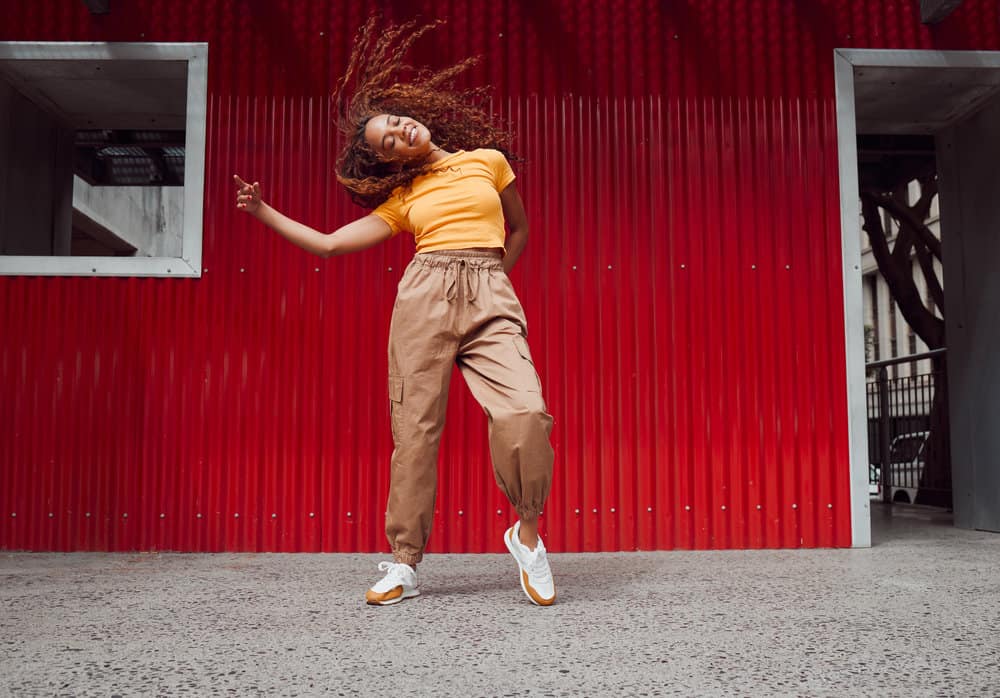
How Often to Cowash
Cowashing can be done as often as you want, within reason. If you want to cowash your hair a few times a week, do so. But everyday co-washes should be avoided in just about every case. The problem with wetting your hair down every day is that you could develop something called hygral fatigue.
It's a condition where your hair becomes damaged due to being waterlogged on a regular basis.
Some of the main symptoms you may notice if you have hygral fatigue include excessive frizz, a dull cast on your strands, and brittleness, which could increase your chances of developing breakage.
So, try not to cowash your hair too often. A good starting frequency for cowashing is 1 to 2 times per week.
What to Do After Washing Your Hair
Now that you understand the basics of washing your hair, you might be wondering what you're supposed to do afterward. There are a few things that your mane needs after a shampooing or cowashing session, and we'll share them with you in this part of the article.
Condition or Deep Condition Your Hair
Shampooing your hair, even with a gentle shampoo, leads to some degree of dryness after the fact. To replenish some of that moisture, you should reach for a conditioner or deep conditioner.
These are products that contain hydrators, oils, and other ingredients your hair needs to be great. Regular conditioner provides surface moisture and repair, and deep conditioners provide a deeper overall treatment and are especially good for chronically dry or damaged hair.
To use a conditioner, you'll follow the below steps:
- Dispense some conditioner/deep conditioner into the palms of your hands and rub them together.
- Apply the conditioner to your hair, focusing mainly on the ends. This is where the hair tends to be the driest.
- Distribute the product through your hair using your fingers or a wide-tooth comb. Comb from the ends to the roots.
- Wait a few minutes for the conditioner to penetrate your hair. The amount of time you'll wait depends on the conditioner you're using and how much help your hair needs. Check the conditioner/deep conditioner label to be sure.
- Rinse the conditioner out of your hair.
Apply a Leave-in Conditioner
Some might not feel like a leave-in conditioner is a necessary part of a hair regimen. But for curls, it's indispensable. Since curls are usually so thirsty for moisture, you've got to get your hydration in wherever you can, and a leave-in can help tremendously with that.
Here are the steps to follow when using a leave-in conditioner.
- Dispense a cream leave-in conditioner into your hands and apply it to your hair. If you have a leave-in conditioner spray, spritz it onto your hair. Your goal is to coat every strand of your hair with the product.
- Comb your hair through with a wide-tooth comb or finger-comb with your fingers. Doing so will enhance product distribution.
Spritz on a Heat Protectant (Optional)
For those who like to heat style their hair, a heat protectant is a necessity. It'll protect against heat damage while making your hair shinier and silkier. Luckily, all it takes to get the benefits is to spray your hair all over.
Lift up certain portions to ensure that all your hair is covered.
These are the main things you'll need to do to curly hair after washing. Your specific hair routine might look a little different from this, but this is a good starting point.
Is it Okay to Wash Curly Hair Every Day?
If you're thinking about wetting your hair down every day for washing purposes, stop and read this first. It's not okay to wash curly hair every day (in the vast majority of cases). One of the main problems you could end up dealing with is hygral fatigue, as we mentioned earlier.
But we didn't yet mention how dry and brittle your hair could end up if you put it through a shampoo session every day. Even the healthiest hair could become stringy, dull, and unmanageable if you wash it every day, especially if you use a typical sulfate-containing shampoo.
When it comes to wetting your hair down for moisture, things are a little bit different. If you're only spritzing your hair lightly for a quick dose of hydration, that's okay.
You aren't wetting your hair down completely, and neither are you applying potentially drying products to it. So, if this is the route you want to take for severely dry hair, you can do that. Your hair could really like it.
If you want to take a daily water spritz up a couple of notches, add aloe vera or your favorite hair oil to it. Doing so will supercharge the moisturizing ability of the spray.

What Shampoos Not to Use on Curly Hair
If you were to try multiple shampoos at random, you'd notice really quickly that some shampoos are better than others. While some get your hair clean and leave it feeling soft and hydrated, others will leave it stiff and calling out for moisture.
There are certainly some shampoos that you should avoid/use sparingly if you want healthy hair, and they are ones that contain the following ingredients:
- Sulfates – Sulfates are surfactants (used to clean the hair) that have gotten a bad rap over the years for being too harsh for curly hair. And this bad rap is warranted. The shampoo that you use on a regular basis should be able to lift away any dirt, debris, excess oils, etc., from your hair. But it shouldn't sacrifice your hair's health to do so. Sulfate-free shampoos are often a much better option, utilizing sulfate alternatives that can do the job in a much gentler way. Opt for those instead.
- Salt – You may not have known that some shampoos contain salt – it's the truth. The salt is used as a thickening agent that makes the product a little easier to dispense and use. Unfortunately, in a large enough concentration, salt can dehydrate your hair in a hurry. So, avoid shampoos with salt for the health of your curls.
- Some alcohols – Notice that we didn't say "all alcohols." There are good alcohols out there, called fatty alcohols. These alcohols coat the hair in a layer of protection and make your strands slippery to aid in detangling. The other alcohols, called drying alcohols, dry your hair out and leave it vulnerable to damage and breakage. Some drying alcohols to look out for on your shampoo label include ethyl alcohol, isopropyl alcohol, and SD alcohol.

Best Shampoos for Curly Hair
We've been over everything you need to know about washing curly hair, including your washing process, what to do afterward, and more.
But what shampoos should you use? There are loads of great shampoos out there that are specifically designed for curly hair, and we'll share them with you in this section.
Carol's Daughter Goddess Strength Sulfate-Free Shampoo
This is a shampoo designed to give the most fragile curls a pick-me-up. It's formulated with castor oil, gentle cleansers, oils, and more to ensure your curls get clean without sacrificing their health.
But this shampoo takes things a little further, providing hair repair and preventing breakage to give you healthier hair over time. In fact, users find that their hair breaks 94% less within one use of this shampoo, according to the manufacturer. It's also safe for all hair types.
Shea Moisture Curl and Shine Shampoo
Shea Moisture is known for creating some of the most hydrating, protective curly hair products, and this shampoo is no exception. The Curl and Shine shampoo is packed with neem oil and silk protein, which promote shine and enhanced hair strength.
And that's not all – in addition to its sulfate-free cleansers, the shampoo contains coconut oil and shea butter to give your hair a mega dose of moisture to make styling and caring for your hair easier.
This shampoo is mainly formulated for thick curly hair, but those with finer or even wavy strands find that its formula works like a charm on their hair. And if your hair is damaged, you'll love how it transforms your strands.
Neutrogena Healthy Scalp Clarify and Shine Shampoo
Regardless of what some might think, every curly head needs a clarifying shampoo. Curly girls often use a lot of products, and moisturizing shampoos don't always get the hair as clean as you need them to in the long run.
For those times when you need a really deep clean, you can reach for this shampoo.
It's got stronger cleansers than your average moisturizing shampoo, but it leaves out potentially damaging sulfates so that you won't lose so much moisture that your hair is parched. This shampoo can remove caked-on dirt, grime, and residue that other shampoos miss and will exfoliate your scalp for a light, airy feeling after your wash is done.
So, there you have it – everything you need to know about how to wash curly hair. We hope that you found all the information you needed to wash your hair like a pro. And we wish you the best with your hair!







